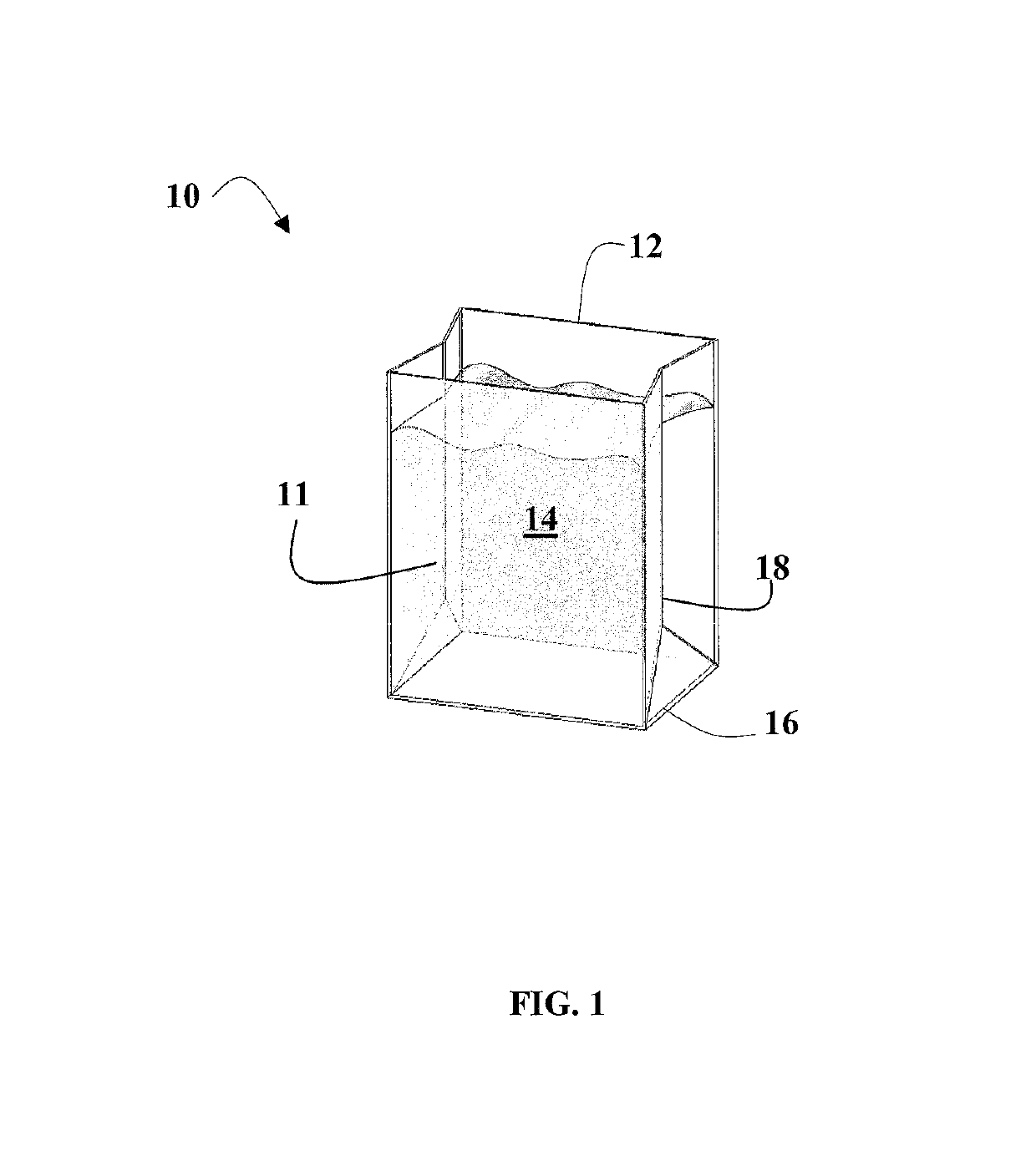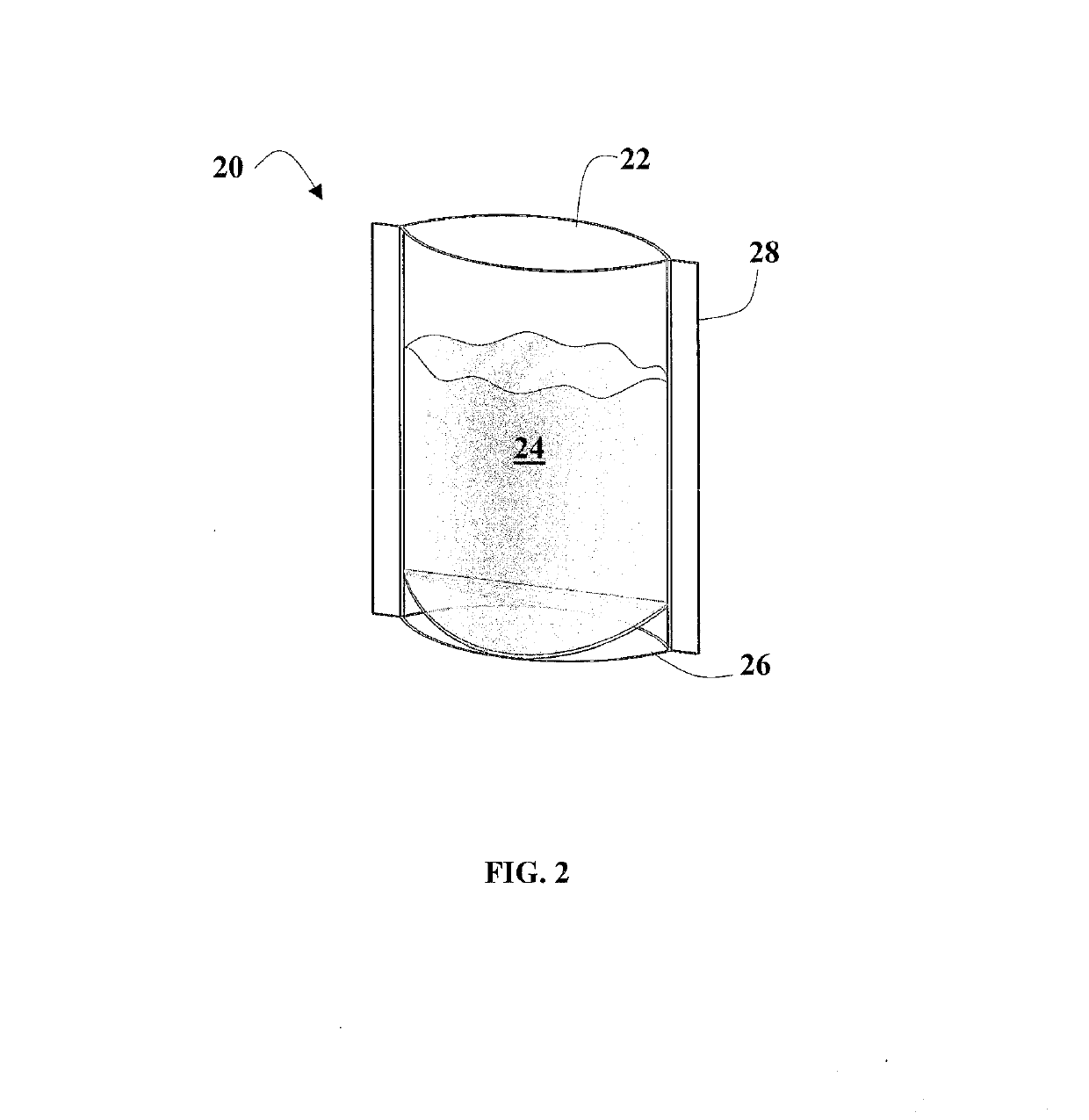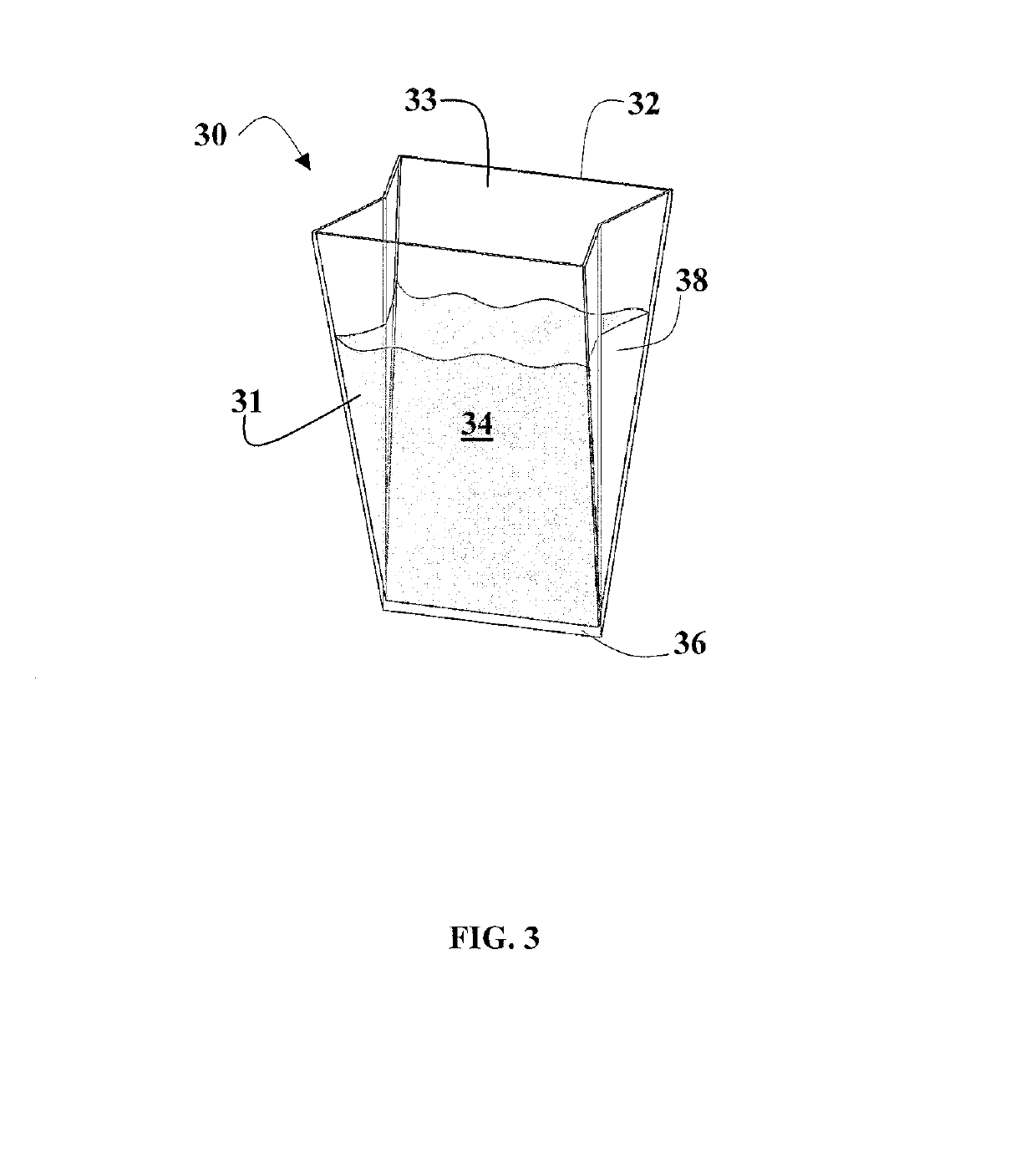Polymer total dissolved solids vessel
a total dissolved solids and polymer technology, applied in the field of polymer total dissolved solids vessels, can solve the problems of affecting the consumption, use, and consumption of water, and many of the available water supplies to be exceeded, so as to improve the conformance of the test, reduce the risk of cross contamination due to improper washing, and accurate low-weight testing
- Summary
- Abstract
- Description
- Claims
- Application Information
AI Technical Summary
Benefits of technology
Problems solved by technology
Method used
Image
Examples
examples
[0046]Vessels formed according to embodiments of the presently disclosed invention were used for TDS testing according the protocols described in ASTM D5907 or Standard Methods 2540 B, C, or D as listed in the Code of Federal Regulations (40 CFR 136.3) or USGS I-1750-85. These protocols are periodically updated with changes to the methods and / or protocol numbers. Thus, while specific protocol numbers and method details have been listed herein, the vessels and methods of the presently disclosed invention may find utility in methods beyond those listed. For example, the vessels may be used in methods which require heating temperatures greater than 180° C., such as greater than 200° C., or even greater than 225° C. Furthermore, typical volumes contained within the vessel are listed herein as less than 500 mL, preferably less than 150 mL. Changes in standard methods may require that greater or lesser volumes of sample are tested. As such, the vessels of the presently disclosed invention...
example a
[0054]Both nylon and PET materials were used to form a thin film vessel according to the configuration shown in FIG. 3. A specific weight of KCl was dissolved in water and placed in each of the testing vessels (column labeled “Total Dissolved Solids Standard Weight (mg)”). The liquid was evaporated and the weight of the vessel was recorded after two preconditioning steps. The results from this TDS Standard testing are listed in Table 1. Both PET and Nylon vessels showed excellent recoveries. In addition, a low weight trial of 5 mg (trial #5) was performed and showed similar recovery percentages.
TABLE 1Total Dissolved Solids standardtesting recoveries using thin wall polymeric vesselsInitialTotal DissolvedVesselTotal DissolvedSolidsTrialVesselWeightSolids StandardRecoveredNo.Material(grams)Weight (mg)Weight (mg)% Recovery1PET0.53724167167.1100.06%2Nylon0.6867160.4160.399.94%3Nylon0.46314148149.26100.85%4Nylon4.54338142.2141.4399.46%5Nylon2.28035.045.1101.19%
example b
[0055]Nylon vessels having a tare weight of less than 1 gram were tested for a range of standard weight recoveries which include standard weight samples comprising low (less than 100 mg), medium (between 100 mg and 150 mg), and high (greater than 150 mg) solids content. A control (blank) was included for several of the testing series, wherein the blank comprised water only. A standard test was considered successful (passed) if the final weight was within 10% (100% ±10%), while a control (blank) test was considered successful if the final weight was within ±0.01grams of the tare weight.
[0056]Results from TDS testing Test using low weight samples of 10 mg are shown in Table 2, and low weight samples of about 25 mg are shown in Tables 3 and 4. Additional testing was performed by a testing laboratory according to the same protocol using nylon vessels as described herein. Results from high weight trials (200 mg) are shown in Tables 5 and 6, results from medium weight trials (100 mg) are ...
PUM
| Property | Measurement | Unit |
|---|---|---|
| melting temperature | aaaaa | aaaaa |
| weight | aaaaa | aaaaa |
| time | aaaaa | aaaaa |
Abstract
Description
Claims
Application Information
 Login to View More
Login to View More - R&D
- Intellectual Property
- Life Sciences
- Materials
- Tech Scout
- Unparalleled Data Quality
- Higher Quality Content
- 60% Fewer Hallucinations
Browse by: Latest US Patents, China's latest patents, Technical Efficacy Thesaurus, Application Domain, Technology Topic, Popular Technical Reports.
© 2025 PatSnap. All rights reserved.Legal|Privacy policy|Modern Slavery Act Transparency Statement|Sitemap|About US| Contact US: help@patsnap.com



